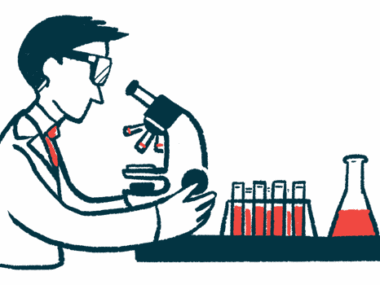Triple natural hepatitis C clearance case may aid vaccine development
Patient's antibodies were different from people who hadn't cleared infection
Written by |

Researchers have identified new strategies for developing a vaccine against hepatitis C by studying the immune responses of a patient who spontaneously cleared three separate infections without treatment.
The antibodies produced by the person against the hepatitis C infection had specific characteristics that were unique from those seen in people with chronic infections that hadn’t cleared.
“Our study gives us a glimpse into how certain individuals clear a highly variable infection, and we believe this information can inform a vaccine development,” Andrew Flyak, PhD, assistant professor of microbiology and immunology at the Cornell University in New York and the study’s co-senior author, said in a university news release.
The study, “Convergent Evolution and Targeting of Diverse E2 Epitopes by Human Broadly Neutralizing Antibodies are Associated with HCV Clearance,” was published in Immunity.
The liver inflammation that marks hepatitis C is caused by an infection with the hepatitis C virus (HCV) that’s spread via contact with infected bodily fluids. Its effects can vary. If the infection persists in the long term, which happens in 75% of cases, it can lead to more serious liver problems, including cirrhosis, or irreversible liver scarring, and liver failure.
Despite the availability of antiviral medications that can dampen an HCV infection, hepatitis C cases are on the rise around the world. That’s likely due to a few factors, including a lack of treatment access, difficulty detecting an early infection, and the reoccurrence of infections after treatment.
“That’s why there is now a big interest in developing a hepatitis C vaccine,” Flyak said.
What causes spontaneous hepatitis C clearance?
Studying the natural immune mechanisms by which 25% of HCV-infected people can spontaneously clear the virus without treatment, for instance, the properties of the antibodies they produce against it, can offer clues for developing a good vaccine.
Rapidly evolving viruses, such as HCV and the COVID-19-causing virus SARS-CoV-2, mutate frequently to survive, producing multiple strains that vary genetically from one another to escape their hosts’ immune responses.
The best approach to fight these viruses off involves a type of antibody called broadly neutralizing antibodies (bNAbs), which can target genetically diverse viral variants. Research has shown that spontaneous HCV clearance is associated with early increases in bNAbs that target an HCV protein called E2.
Most bNAbs to date have been isolated from chronically infected people who hadn’t successfully cleared the virus. Antibodies identified from these people came from a single gene called VHI-69 that codes for a variable part of the antibody molecule. And most of these antibodies targeted a single, specific region of the E2 protein.
“In order to make an antibody, immune systems use multiple sets of different antibody genes, but, for whatever reason, the immune systems in people with chronic hepatitis C infections used just one variable antibody gene, called VH1-69,” Flyak said.
Three separate HCV infections cleared
Here, researchers sought to identify the characteristics of bNAbs from someone who spontaneously and repeatedly cleared an HCV infection and screened for such people through a study by Johns Hopkins University where monthly blood samples are collected from injectable drug users to monitor for HCV infection and clearance. One person was identified who had spontaneously cleared three separate HCV infections without treatment.
The bNAbs produced by this patient exhibited multiple differences from those isolated from chronically infected people and targeted at least three distinct regions of the E2 protein, rather than just one.
This suggests, that to be most effective, an HCV vaccine should try to elicit antibodies that target multiple regions of the viral protein.
“If you have a response to multiple regions, you can have a synergistic effect, you get a response that is much stronger than the sum of its parts,” Flyak said.
Moreover, the person’s bNAbs were genetically diverse, meaning they came from more than just the VH1-69 gene.
While different types of antibodies from the patient came from distinct antibody genes, they targeted similar protein regions, suggesting these bNAbs could have evolved in parallel to adapt to similar necessities, in this case HVC.
Further analyses showed these different bNAbs-coding genes shared certain genetic variants, which the scientists believe are a sign that those stretches of DNA are critical for effective immune responses against HVC.
Additional experiments revealed the structure of the patient’s bNAbs and exactly how they bind to the E2 protein, highlighting areas where the virus could be targeted by a vaccine.
“Together, these findings support the feasibility of an HCV vaccine and support the development of vaccines that can induce bNAbs targeting multiple E2 [target regions],” wrote the researchers, who will work with a larger group of colleagues to screen HCV vaccine candidates in preclinical studies, the goal being to identify ones that can move forward into clinical trials.
The study was supported by the National Institutes of Health.







